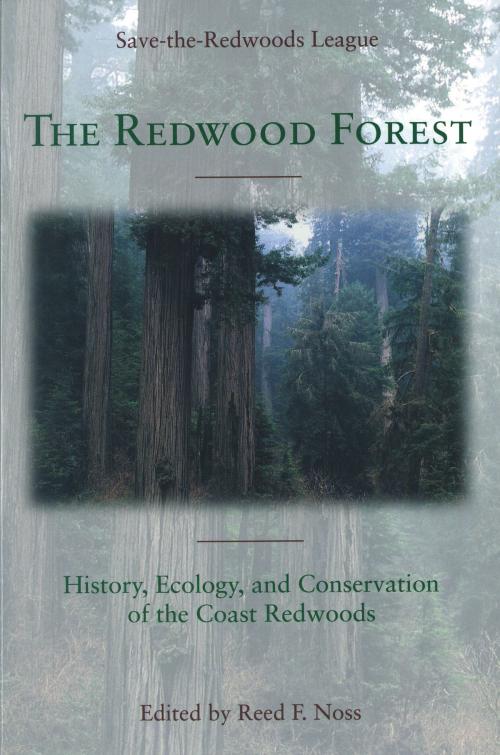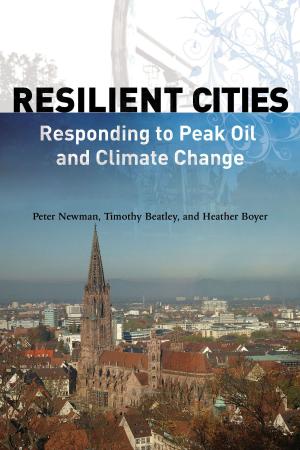The Redwood Forest
History, Ecology, and Conservation of the Coast Redwoods
Nonfiction, Science & Nature, Technology, Agriculture & Animal Husbandry, Nature, Environment, Environmental Conservation & Protection| Author: | Save-the-Redwoods League | ISBN: | 9781610913386 |
| Publisher: | Island Press | Publication: | February 22, 2013 |
| Imprint: | Island Press | Language: | English |
| Author: | Save-the-Redwoods League |
| ISBN: | 9781610913386 |
| Publisher: | Island Press |
| Publication: | February 22, 2013 |
| Imprint: | Island Press |
| Language: | English |
Evidence is mounting that redwood forests, like many other ecosystems, cannot survive as small, isolated fragments in human-altered landscapes. Such fragments lose their diversity over time and, in the case of redwoods, may even lose the ability to grow new, giant trees.*The Redwood Forest*, written in support of Save-the-Redwood League's master plan, provides scientific guidance for saving the redwood forest by bringing together in a single volume the latest insights from conservation biology along with new information from data-gathering techniques such as GIS and remote sensing. It presents the mcurrfindings on the geologic and cultural history, natural history, ecology, management, and conservation of the flora and fauna of the redwood ecosystem. Leading experts offer a comprehensive account of the redwoods ecosystem, with specific chapters examining the history of the redwood lineage; terrestrial flora and fauna, communities, and ecosystems; aquatic ecosystems; landscape-scale conservation planning; and managemalternatives relating to forestry, restoration, and recreation; among other topics.*The Redwood Forest* offers a case study for ecosystem-level conservation and gives conservation organizations the information, technical tools, and broad perspective they need to evaluate redwood sites and landscapes for conservation. It contains the latest information from groundbreaking research on such topics as redwood canopy communities, the role of fog in sustaining redwood forests, and the function of redwood burls. It also presents sobering lessons from currresearch on the effects of forestry activities on the sensitive faunas of redwood forests and streams. The key to perpetuating the redwood forest is understanding how it functions; this book represents an important step in establishing such an understanding.
Evidence is mounting that redwood forests, like many other ecosystems, cannot survive as small, isolated fragments in human-altered landscapes. Such fragments lose their diversity over time and, in the case of redwoods, may even lose the ability to grow new, giant trees.*The Redwood Forest*, written in support of Save-the-Redwood League's master plan, provides scientific guidance for saving the redwood forest by bringing together in a single volume the latest insights from conservation biology along with new information from data-gathering techniques such as GIS and remote sensing. It presents the mcurrfindings on the geologic and cultural history, natural history, ecology, management, and conservation of the flora and fauna of the redwood ecosystem. Leading experts offer a comprehensive account of the redwoods ecosystem, with specific chapters examining the history of the redwood lineage; terrestrial flora and fauna, communities, and ecosystems; aquatic ecosystems; landscape-scale conservation planning; and managemalternatives relating to forestry, restoration, and recreation; among other topics.*The Redwood Forest* offers a case study for ecosystem-level conservation and gives conservation organizations the information, technical tools, and broad perspective they need to evaluate redwood sites and landscapes for conservation. It contains the latest information from groundbreaking research on such topics as redwood canopy communities, the role of fog in sustaining redwood forests, and the function of redwood burls. It also presents sobering lessons from currresearch on the effects of forestry activities on the sensitive faunas of redwood forests and streams. The key to perpetuating the redwood forest is understanding how it functions; this book represents an important step in establishing such an understanding.















